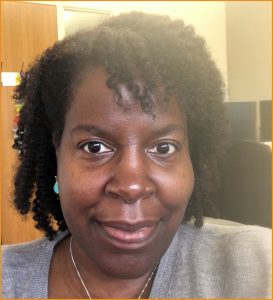We are happy to announce that Lisa Creary joined Omixon as a Field Application Scientist effective October, 2020. In the following mini-interview Lisa talks about her passion, experiences and thoughts on HLA activities. Welcome Lisa!

Lisa Creary, FAS
How did you become a scientist?
My first experience of science dates back many moons ago when I was introduced to biology by my first science teacher during my early years of secondary school. I was fascinated to learn about the functionality of cells, genes, and organs. I instantly gravitated towards the subject, and I knew even at a young age that I wanted to explore/work in this field. Later on, I was fortunate enough to have an excellent GCSE/A-level Chemistry teacher (Mr Cooper!) who noticed my interest/talent, and encouraged me to pursue science as a career.
What is the best part about being a scientist?
The discovery of new information, problem-solving, contributing to the advancement of human health. You never get bored!
Where and what did you study? Where do you live at the moment?
I completed all of my education in London, UK. For my first degree I studied Biochemistry (BSc), followed by a MSc in Medical Molecular Biology, and a PhD in Genetics. For my PhD I examined the influence of genetics variants on fetal haemoglobin expression in individuals of different ancestry. I’m a Londoner by birth and at heart, but I currently reside in the bay area of Northern California
What is your professional background?
I’ve been a research scientist in the HLA & Immunogenetics field for over 13 years. I’ve worked in Immunogenetics research, specifically HLA disease association in various neurological diseases, populations studies based on HLA diversity, NGS for HLA typing development at Stanford University. I completed my post-doctorate studies at the National Health Service, Blood and Transplant (NHSBT) HLA R&D lab, where I studied how tissue typing matching for HLA and KIR affects the outcomes of stem cell transplants, and developed a NGS HLA typing method for the NHSBT national laboratory.
What kind of publications have you made so far and which one was the most interesting topic for you?
I’ve published research papers examining HLA population diversity, and investigating the contribution of HLA and KIR to autoimmune diseases such as Multiple Sclerosis (MS) and Parkinson’s disease. Our manuscript published in the Multiple Sclerosis Journal 2018 was the first study to show associations of the HLA-DR15, and HLA-DR4 haplotypes at the intronic level with MS.
Have there been any major advances in technologies or knowledge that have changed working practices since you have been working in this field?
Well number one is certainly the advancement of sequencing technologies. When I first started working in the HLA field, Sanger sequencing was the gold-standard for HLA typing, but as we all know resolving HLA phase and allele ambiguities is often time-consuming and cumbersome. The availability of NGS HLA typing kits and software, as well as for other immunogenetics markers, totally changed the game.
What do you think the future holds with respect to your field?
The future is bright in the immunogenetics field. The continued advancement of sequencing technologies for HLA, such as nanopore based sequencing, will further stream-line the typing process and reduce the patient-donor selection time for stem cell transplants.
And finally- please say something about yourself. For example, what are your favourite free time activities?
The beauty of living in California is the good weather. For this reason, one of my favourite activities is hiking and walking for long distances. I never knew whilst living in London I would enjoy outdoor activities!
Thank you for the answers, Lisa! Once again welcome aboard!





